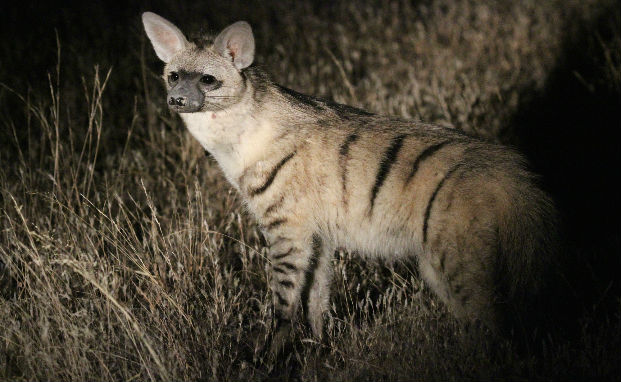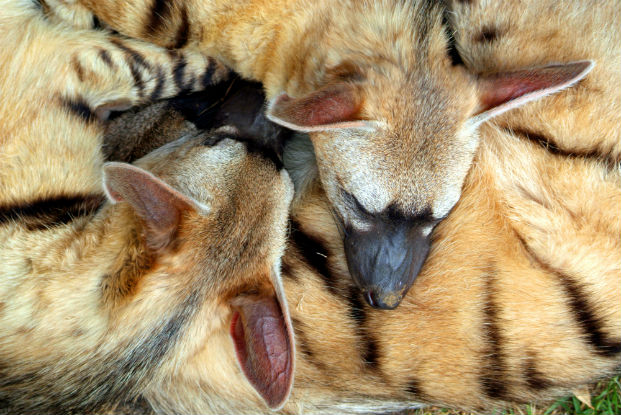The aardwolf belongs to the hyena family. It is a similar size to a jackal, has a dog-like head and sports pointy ears that stand upright. They can live in most habitats except true desert and forests. Their only requirement being a good supply of harvester termites. Their teeth are not able to chew meat but their canines are well developed for self-defence.
Vote for the fact you find most fascinating
During a day’s foraging the aardwolf can consume 200,000 to 300,000 termites, that’s 1 to 1.5kg.
In winter when food is scarce the aardwolf may drop 25% of its body weight.
When threatened an aardwolf will erect its mane so it appears almost twice the size. However, it will keep its mouth closed so that it doesn’t advertise that its teeth are underdeveloped.
Because the aardwolf ingests so much sand and soil when it feeds one single defecation can be as much as ten percent of its body weight.
The large ears of the aardwolf are constantly moving in search of prey. Hearing is so important to the animal that when it rains the aardwolf will stop foraging as the raindrops mask the sound of the termites.
During a cold snap the aardwolf will stay in its burrow during the night where it will conserve energy by letting its body temperature fall to 31 c.
The aardwolf is a specialised feeder and will dine almost exclusively on the protein rich harvester termites which are made up of 75% lean meat.
The aardwolf has a broad tongue which is covered in copious amounts of saliva which the termites stick to. This saliva is an important part of the digestive process.




